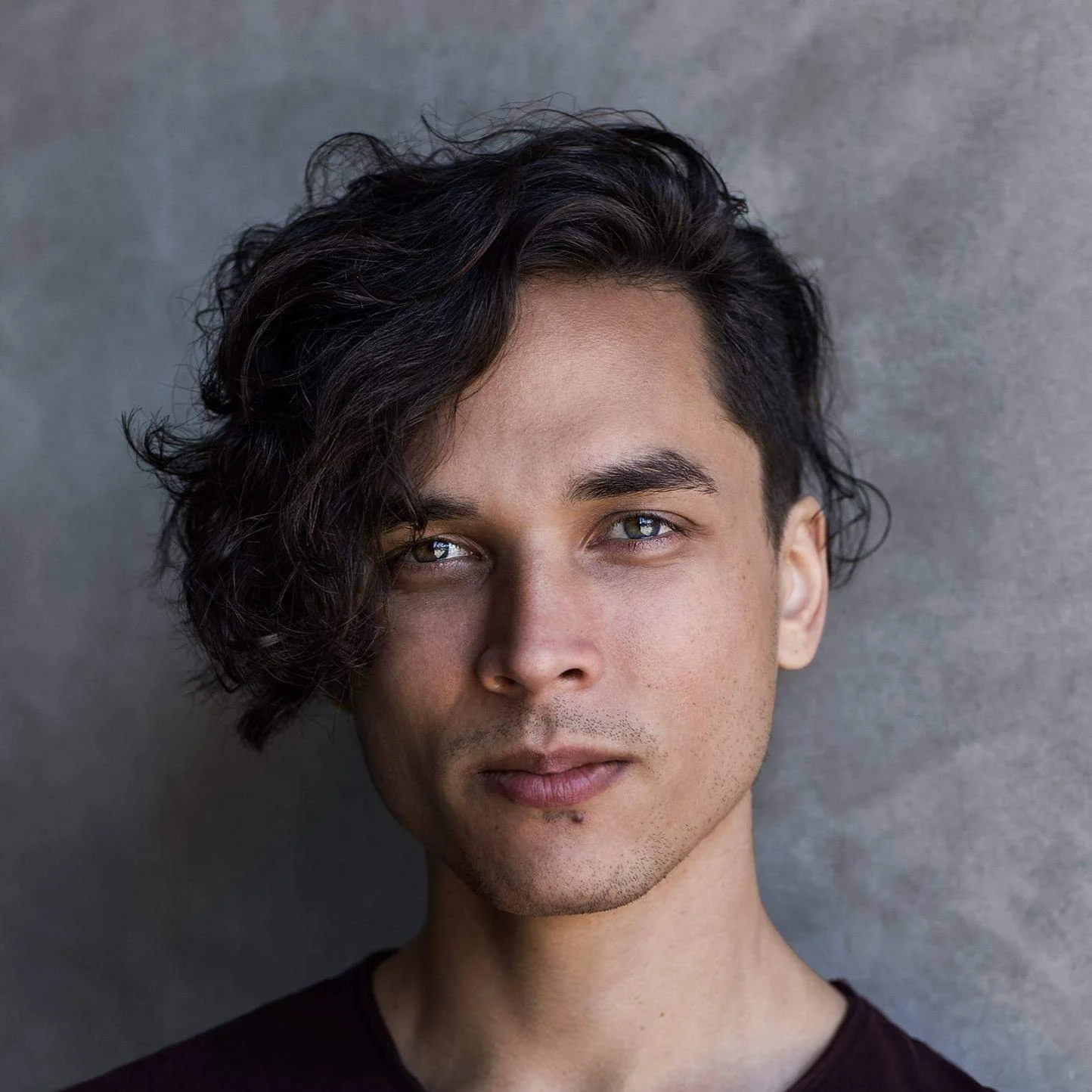Screenwriter Arun Croll on Joining Netflix, What Inspires Him, and Comparing Writing to Building Furniture
Mixed Asian Media - February 22, 2023
By Naturally MonaLisa
Arun Croll
Arun Croll, who was recently selected to be part of Netflix’s Created By Initiative. He’s full of wisdom about writing, and even used the unlikely but perfect metaphor of writing as building furniture.
I had the pleasure of speaking to Arun Croll, who was recently selected to be part of Netflix’s Created By Initiative. Arun was one of 14 mid-level writers that were offered script development deals, as part of Netflix’s ongoing commitment to increase diversity in the writer’s room and across the TV and film industry. He may be humble and call himself an “all-American mutt,” but his upbringing and family history is so unique I wish I had a few more hours to hear more about his story. He’s full of wisdom about writing, and even used the unlikely but perfect metaphor of writing as building furniture. You may learn more about Arun Croll atwww.aruncroll.com, and you can follow him on Instagram@therealarvn.
Interview
Congratulations on being part of the inaugural group of writers selected for Netflix's Created By Initiative! When did you find out you were selected for this program, and how much does this mean to you?
Thanks! I found out I had been selected in December. I met with my contact at Netflix, and we put together the press release within a couple of weeks. It means a lot! I'm honored to have been chosen because I know there are many other good writers who had their hats in the ring.
What are you most excited about by Netflix's Created By Initiative, and what would you like to achieve at Netflix?
I'm really excited to see what everybody comes up with. Everybody comes from a very different background, and I think we will see some really unique projects that come out of this initiative. And I'm excited to see what I will come up with as well because I don't know yet. I have some ideas cooking obviously, but this is a script development program, so I will work with an executive at Netflix to figure out what they're looking for. We're supposed to be paired up with an executive by the end of this month (February 2023). So I’m really excited to meet the people that I will be working with and to start working on ideas.
On your website, you state that you focus on horror, thriller, and sci-fi feature films. Why do you focus on those genres, and what fascinates you about them?
Horror is first on that list for a reason. When I was young, I saw more horror films than most kids do. My mom liked horror films, and I watched a lot of the classics such as The Exorcist, and Alien. This made an impression on me because it’s really scary stuff when you're young. I came to realize that fear is a fundamental element of good storytelling and good character construction. Even in other genres like comedy and romance, you can't have a compelling character if the character isn’t afraid of losing something. If you have a character without fear, a lot of times that character is not much of a real person, but more like a cardboard cutout. I like the horror genre because it goes straight to the source of that emotion.
There are so many good stories that are thrillers on some level and have elements of mystery or suspense. Science fiction is such a big genre, and it’s a way for me to tap into a new situation and a new kind of world.
Photo courtesy of Arun Croll
Tell us about your background and upbringing, and when did you decide you wanted to be a screenwriter?
I was born in San Francisco, and I grew up in the San Francisco Bay Area. I’m an all-American mutt. I'm part Japanese, part Mexican, and part white. My upbringing had elements of all these cultures. I went to a predominantly white school when I was growing up, but my parents spoke Spanish at home. We ate with chopsticks, and we had different cultural decorations at home. For instance, we had Buddhist mandalas next to the Day of the Dead statues in the house. My household was definitely a cultural melting pot.
What set me on a writing path early on was the fact that I didn't have TV when I was growing up. My parents didn't want me to watch TV, so instead I was reading all the time. Because I didn't have TV at home, that became my forbidden fruit. If I went to a friend's house, I just wanted to watch movies and TV shows.
I started writing when I was 6 years old. The first thing I remember writing was trying to adapt the original Star Wars movie into a novel. That wasn’t very good, but it was definitely a distinct memory! Over the years, I spent a lot of time writing novels, short stories, poetry, and essays. My background is in English literature, so I didn’t study film or screenwriting at school. But movies are my first love, and I came full circle to screenwriting at a certain point in 2016. I started dabbling in it again, and I started having some successes with screenwriting that I hadn't had before. Then in 2017, I decided to focus on screenwriting full-time. I moved to Los Angeles and went for it. It’s been over five years since I went down the screenwriting path.
You have written 14 features, 5 television pilots, and numerous short films. How has your mixed-race background influenced your writing?
There are two main strands of how my background has influenced my writing.
The first thing is the fact that my parents met during the seventies in the San Francisco Bay Area. They were studying Indian music at the time. My dad actually moved to San Francisco to learn to play the sitar (a stringed instrument originating from the Indian subcontinent). I was born a few blocks away from the Haight-Ashbury district in San Francisco, which was where the hippie movement and counterculture started. My parents were very influenced by that, and they had a cosmopolitan and New Age worldview. I was exposed to different ways of thinking and different worldviews early in life, and that had a profound effect on my writing.
The second thing that has influenced me is my Asian background. My family moved from Japan to the U.S. during the early 1900s, so they were already in America during World War II. My great-grandparents and my grandmother were unfortunately forced into Japanese American incarceration centers during World War II. I heard about this when I was little, but I didn’t really learn about it until I was older. When my grandmother was getting older and I was taking care of her a lot, I had a lot of conversations with her about her experience, and that’s when I started to understand this period in history, and how living in the internment camps affected her family and herself. My grandmother passed away a few years ago, and after she passed I wrote a screenplay called The Sun Ghost. This is a ghost story that’s set in a Japanese American incarceration center, specifically the one where my family was held in. This was the first screenplay that I wrote that I felt very proud of, and it was the first screenplay that started getting me attention from the industry. As a result of that screenplay, I connected with CAPE (Coalition of Asian Pacifics in Entertainment), which is the foundation that submitted me for this Netflix opportunity. I wrote this script thanks to my grandmother and my history, and that was how I got a foot in the door.
Photo courtesy of Arun Croll
You also have written more than 10 articles for Medium.com about writing and productivity. One of your articles compares writing to assembling cheap furniture. Why does this analogy work so well?
Years ago, I was putting together an IKEA bed. I wasn’t very good at putting together furniture. I screwed in one corner of the bed frame really tight, and then went to the next corner of the bed frame and screwed that in really tight. By the time I got to the last corner of the bed frame, I couldn't get the pieces to fit together because I had tightened all the other corners too tightly too soon. So I had to go back and loosen up all the screws in every other corner of the bed frame. Once I had loosened everything up, then the bed could take its shape.
I realized I had been making a mistake with my writing. When I first started taking writing seriously, I spent a lot of time writing and rewriting an individual scene, a page, or a sentence. I would polish and polish until I got it right. Then later on in the project, I realized I didn’t need that scene at all, and I had to throw it away or rewrite it into something completely different.
It’s better to get the general shape of the story in the beginning so that you can see what it looks like and where it needs to go, and then go back to tighten it up and make it perfect. A story is a very abstract and intangible concept. But if you really think about it, you have the sense of a story having “legs” or being able to stand up on its own.
What is the best piece of advice you have received about writing that you can share with young emerging writers?
Do not focus on producing a finished product, but instead focus more on practicing writing. A concert violinist practices hours and hours before they play a concert, and a football player practices hours and hours before they play a match. A musician returns to the fundamentals of practicing scales, and athletes always return to lifting weights. A lot of writers see themselves as a writing factory trying to meet a quota, such as finishing three screenplays in a year. We tend to fall into this trap of just focusing on the output. It was very helpful for me to shift my perspective and think of myself more like an athlete, where I would set time aside and practice the basics of writing. Part of that also is to study good writers, give myself space to play with different types of writing, and focus on taking care of my body and my mind so that I can push my limits. It’s more about growth and honing your skills, rather than producing work.
You also want to find people who can be your coach. A coach is someone that can give you feedback and hold you accountable, just like how athletes have coaches and musicians have instructors.
I find it much more motivating to be able to watch myself improve day by day, rather than finishing a piece of work and checking a box. That’s just not what writing is about. At the end of the day, you need to find fulfillment in the writing experience to be able to keep doing it.
End of Interview
Naturally MonaLisa wears many hats and has many passions. She is an ATD Master Trainer and a SHRM-CP certified HR professional. She has a small YouTube Channel where she shares her personal experience with eczema and asthma, and she promotes nontoxic and vegan products that are safe for everyone to use. She also volunteers at an advocacy group called “BLM Cantonese,” in which she translates BLM-related terms from English to Cantonese to help Cantonese speakers have difficult yet important conversations about Black Lives Matter with their family and friends. You can follow her YouTube Channel called “Naturally MonaLisa” and follow her on Instagram @NaturallyMonaLisa.




